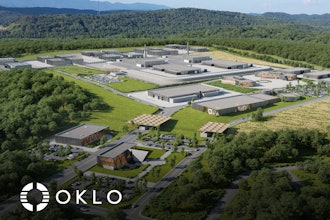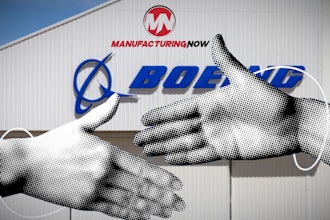
TRAILBLAZING SHORTER
PATHS TO PLM VALUE
TRAILBLAZING SHORTER PATHS TO PLM VALUE 2
NAVIGATING THE TRAIL TO SOLVING REAL PROBLEMS
When you examine the product development process, you
discover that problems are everywhere. You can certainly find
them in engineering. There might be issues in testing and
certification. There could be complicated processes and
procedures related to platform planning. And there are often
significant product development problems that arise outside of
engineering. Procurement might need specific activities to share
design data securely with suppliers. Operations might need to
support a particular effort to gain sign-off from customers in the
middle of development. Compliance might need to verify that
regulatory requirements have been satisfied. Any of these issues,
and many others, could be a critical issue that needs to be
addressed as soon as possible.
Product Lifecycle Management (PLM) systems have great
promise as a way to address these issues. They offer powerful
capabilities to author, manage and track product data. They
provide functionality to automate and manage projects and
processes. They deliver tools to share and collaborate with
internal and external product development stakeholders. They
present the means to analyze and report on a range of
organizational metrics and product characteristics.
However, realizing the value of the value of these capabilities is
exceedingly difficult with traditional on-premise PLM systems.
The total cost of ownership is high, and it requires large upfront
costs, specialized hardware, and ongoing IT staff and
maintenance fees. They often require that fundamentals—
including data management, design release, and change
management—be deployed first, and these may or may not be
related to the problem the organization is trying to solve.
Tailoring such systems to the specific processes often requires
heavy planning and customization phases. Then, once up and
running, such systems are frequently inflexible to change. The
path to value for traditional on-premise PLM systems is long,
circuitous, and expensive. Product development leaders and
executives are often scared off because it is so hard to realize its
value.
Fortunately, a new wave of modern, cloud-based PLM systems is
emerging. Because they come as a subscription service, the total
cost of ownership is much lower, making this solution available to
a broader range of manufacturers. Built in the cloud, these new
PLM systems can be accessed instantly and are flexible enough to
adapt to the organization’s needs. Additionally, the fundamentals
related to data management and design release aren’t required,
allowing organizations to attack their biggest problems
immediately. The path to value for modern cloud-based PLM
systems is streamlined, unconstrained, and affordable.
The focus of this eBook is to dig further into these matters. Here,
you will find more details on the technical differences between
traditional on-premise and modern cloud-based PLM offerings.
You will find research results on how different technologies are
used to manage product development data. You will hear from
manufacturing companies that are deploying these solutions
firsthand. From there, you can determine which solution is best
for your company.
TRAILBLAZING SHORTER PATHS TO PLM VALUE 3
THE FLAWS OF TRADITIONAL ON-PREMISE PLM SYSTEMS
What is a traditional on-premise PLM system?
Traditional PLM software is installed on a computer server within
the company firewall and is accessed over internal networks. The
system is acquired through the purchase of perpetual licenses
from a software provider. Many utilize client-server architectures,
which require the installation of an application on desktops,
although many now provide access through web browsers.
While PLM offers great promise overall, these types of software
systems have a number of faults.
THE TOTAL COST OF OWNERSHIP IS HIGH
A prime shortcoming of traditional on-premise PLM systems is
cost, both in the short-term and the long-term.
The investment in these kinds of systems starts with the licensing
model. Based on client-server architectures, providers of these
systems charge a flat fee for the number of end users that can
access the system concurrently, which represents the maximum
amount of users. These are sold as perpetual licenses, which the
organization can use forever. This often adds up to a significant
amount of money that must be paid upfront in lump sum. For
organizations, such a large cash outlay qualifies as a capital
expenditure (CAPEX), which frequently requires a formal cost
justification and executive approval.
The investment then continues in the form of services needed to
plan, customize, configure and install traditional on-premise PLM
solutions. Although some capabilities are available out-of-the-box,
such systems often need to be modified to mirror the
organization’s digital definitions of products, projects, and
processes. This can often expand into management consulting, as
some organizations take such opportunities to revisit and refine
these definitions for better performance. This expense is often
rolled into the initial CAPEX for software licenses.
PLM systems, of course, run on server hardware. Traditional on-
premise solutions require computer resources that connect to
internal networks. In large deployments, dedicated data centers
are necessary. This represents another line item alongside
software licenses and services on the initial CAPEX.
Finally, there are the ongoing expenses related to traditional on-
premise PLM solutions. For access to technical support services
from the software provider, there are often annual maintenance
fees. Such systems, running on internal server hardware and
connected to internal networks, require dedicated IT staff for
support. These support costs, whether outsourced to contractors
or supported by Full Time Employees (FTE), add to total cost of
these types of systems.
Between initial license, service, hardware, maintenance and IT
staffing costs, traditional on-premise PLM systems are not
financially feasible for most companies, especially small to mid-
sized manufacturers. This one of the reasons the path to value for
these solutions is difficult.
TRAILBLAZING SHORTER PATHS TO PLM VALUE 4
CASE STUDY: TSM CONTROLS
David Keeley, Engineering Manager at TSM Controls,
is very familiar with PLM solutions. He worked
for 4 years at another manufacturer deploying a
traditional on-premise PLM system. When he joined
TSM and looked at deploying a similar solution, he
knew there might be drawbacks.
“Most PLM deployments don’t get past PDM
functionality,” says David. “When we started planning
for PLM here at TSM, we looked at that data management step. It
would have involved migrating our CAD (Computer Aided Design)
and retraining all of our engineers to check those files in and out,
which is a change in how they work day-to-day. There is a benefit
there in terms of search and reuse, but you don’t realize it for 18
months. Based on my past experience, I was concerned about any
PLM initiative getting stalled. There is just so much change getting
to that point with little benefit.”
Ultimately, David and TSM decided to deploy a cloud-based PLM
solution instead. “We found that we didn’t have to deploy a big
catch-all system right from the start,” continued David. “You don’t
have to start with CAD. You don’t have to clean data. Instead, we
went after key process management and enterprise integration. We
have a full integration with our support ticketing system, which
tracks our field service and returned materials process. Those tickets
kick off workflows in our PLM system and remain constantly
synchronized. We also use it for approvals in our order confirmation
process.“
To date, TSM still uses their existing PDM system, which means there
was no disruption for the engineers. However, they have eliminated
most of the use of emails, spreadsheets and databases that were
causing significant errors.
TIME-TO-ACCESS AND SOLUTION INFLEXIBILITY
Another flaw of traditional on-premise PLM systems is the time
required to deploy and access the system, as well as the
inflexibility of the solution once it is active.
Although the cost of deployment services is a drawback for
traditional on-premise PLM systems, the delay in the company’s
ability to access the solution is also a fault. The data model and
schema of these systems are difficult to change after they are
deployed, meaning they must done right the first time. As a
result, planning, customizing, configuring and installing the
system requires significant time—weeks or months—to
complete. This means the organization must wait until the system
is available before it can start solving the issues that initially
motivated it to pursue PLM.
On a related note, the main reason why it takes so long to deploy
traditional on-premise PLM systems also makes it difficult to
change. The root cause is the inflexible nature of the data model
and schema, which represents the underlying definitions of
everything from products to projects and processes. These
objects must be carefully and meticulously structured upfront.
Changes could wipe out existing data or result in process errors.
This might not be an issue for most companies. However, the
needs of product development are dynamic. To support an
important, time sensitive project, a new compliance process
might be needed. To win a pending contract, an existing concept
design procedure might need to be tweaked.
Ultimately, the purpose of PLM solutions is to support product
development. Unfortunately, the inflexibility of traditional on-
premise PLM systems can’t deliver on those needs in a timely
fashion. This is another reason the path to value is hard.
TRAILBLAZING SHORTER PATHS TO PLM VALUE 5
FUNDAMENTALS ARE REQUIRED
In many cases, organizations pursue a PLM system to address a
specific problem. Unfortunately, they often find that they must
first deploy the fundamental capabilities of PLM, including data
management, design release and change management, before
they can tackle the original problem.
The reasoning behind the deployment of PLM fundamental
capabilities is sound. Deploying data management functionality
for Mechanical Computer Aided Design (MCAD), Electrical
Computer Aided Design (ECAD) and compiled software provides a
fairly complete definition of a product. Control over that
definition is then governed by design release and change
management capabilities. From there, companies can bring
additional digital aspects of their product under control, and can
automate related projects, processes, and procedures. This is a
sound approach for anything dependent on the digital definition
of the product. And therein lies the flaw in this approach.
For some companies, the biggest problem may not be related to
the product. In other cases, an abstracted representation,
including a single drawing or model file, might be enough to
enable a process and solve the issue. Unfortunately, the
deployment of traditional on-premise PLM systems forces
companies to jump through hoops to get the fundamentals in
place, often unnecessarily.
PROOFPOINT: ADOPTION OF PLM IS LOW
With the many flaws of traditional on-premise PLM solutions, one
would expect low levels of adoption. Testing that hypothesis was
one of the objectives of Lifecycle Insights’ PLM Study. Conducted
in January 2015, it collected responses on the use of PLM related
technologies, including the management of design data and
execution of projects and processes, from 760 organizations.
Figure 1, shown above, reveals which technologies—either
exclusively or in combinations—companies use to manage design
data. Nearly half of the study’s respondents still use desktops and
shared drives to manage the digital definition of the product.
Furthermore, only one quarter of all respondents are exclusively
using software systems, including PLM solutions. That is a
strikingly low percentage of businesses that have completed one
of the fundamental aspects of traditional on-premise PLM
systems.
49%
26%
24%
Only combinations of
desktops / laptops and
networked drives
Software systems
combined with other
technologies
Software systems
exclusively
TRAILBLAZING SHORTER PATHS TO PLM VALUE 6
Figure 2, shown above, details which technologies companies use
to support the execution of projects and processes. Barely over a
quarter of the respondents are still printing out forms and routing
them inside or between offices. In this application of technology,
software systems are used by nearly 4 out of 10 respondents, but
very few are using solutions like PLM exclusively. Again, this is a
strikingly low number of organizations that are utilizing software
systems, including PLM solutions.
TAKEAWAYS ON THE FLAWS OF TRADITIONAL ON-
PREMISE PLM SYSTEMS
The drawbacks of traditional on-premise PLM solutions are
numerous, including a high total cost of ownership, long lead
times for access, the inflexibility to changes, and the often
unnecessary need to deploy fundamental capabilities. Findings
from the PLM Study, which show low levels of adoption of
software systems for the management of design and execution of
projects and processes, imply the barriers to deployment are
stronger than the potential benefit that these solutions can
provide. Overall, the path to value for traditional on-premise PLM
systems is expensive, both in terms of time and money.
26%
34%
39%
Print, exclusive or alongside
digital documents, email and
desktop applications
Digital docs, desktop apps
and email
Software systems and
anything else
FIGURE 2: TECHNOLOGIES USED TO
EXECUTE DEVELOPMENT PROCESSES
Includes Design Review, Design Release, Change Management and
Project / Program Management,
The PLM Study, Conducted January 2015, 760 Respondents
TRAILBLAZING SHORTER PATHS TO PLM VALUE 7
THE ADVANTAGES OF MODERN CLOUD-BASED PLM SYSTEMS
What is a modern cloud-based PLM system?
Cloud-based PLM services provide access to PLM software that
runs on server hardware outside the company’s firewall in the
cloud and are sometimes specifically architected to be cloud
native. These solutions are acquired through a subscription
service, where the company pays at a certain frequency, often
monthly, for ongoing access to the solution.
Modern cloud-based PLM solutions hold several advantages over
their traditional, on-premise peers, most of which are enabled by
their technological underpinnings. Overall, the path to value with
these new PLM offerings is far shorter and easier.
THE FLEXIBILITY OF SUBSCRIPTION BASED ACCESS
With traditional on-premise PLM solutions, companies have to
make a large upfront CAPEX investment and long-term
commitment. One significant advantage of modern cloud-based
PLM systems lies in the different ways companies acquire access.
With on-premise systems, the software is installed on customer
servers, out of reach of the technology provider. As such, they
must sell perpetual licenses that remotely control how many
users can access the system at any one time. Those licenses are
tracked by software that comes with the PLM system.
In contrast, technology providers have far more control over how
many users at any single customer can access the solution, as
they are the ones running the software in the cloud. In turn, they
can increase or decrease the number of licenses a company can
access at any given time.
This, in turn, allows technology providers to offer access to the
PLM solution as a time-based technology service instead of selling
perpetual licenses.
This offers advantages to the technology provider, but the
customer reaps significant benefits as well. With a subscription
service, companies need not make large upfront CAPEX
investment. Rather, they need only commit to much smaller
monthly payments as a subscription. Additionally, there is often
no long-term commitment to the PLM solution. If the system isn’t
fulfilling the company’s needs, then they can discontinue the
service. Furthermore, if the company’s needs shrink or grow, they
can decrease or increase the size of the subscription accordingly.
Outside of the subscription, modern cloud-based systems have
few other costs. There is no hardware cost from a server
perspective. That cost lies with the technology provider in the
cloud. There is little cost from an IT staff perspective, as there is
no need for hardware tuning. Ongoing maintenance costs are
built into the subscription.
In short, modern cloud-based PLM systems let organizations
avoid large upfront CAPEX investments, provide the flexibility to
grow or shrink their subscription as needed, and let them avoid a
long-term commitment. The path to value here is easier because
of the much smaller initial investment.
TRAILBLAZING SHORTER PATHS TO PLM VALUE 8
CASE STUDY: INPHI
Inphi is a high-speed analog semiconductor
company, which provides products such as
modulator drivers, transimpedance amplifiers,
100G, Gearbox, CDR and other connectivity products.
Robb Johnson, Inphi’s Director of Technology had
considered a number of PLM solutions, but
ultimately decided to move forward with a cloud-
based system. “We felt that on-premise PLM systems
have some inherent disadvantages,” states Johnson. “Moving
forward with a cloud-based solution made a lot of sense to us.
Inphi’s PLM initiative first focused on document libraries as well as
approvals and control. They now manage over 100 document types
in their system, with preset lists of approvers for each by role. That
was the early starting point, but they quickly moved on to other
applications of PLM.
Next, Inphi moved on to focus on approvals in the New Product
Development and Introduction (NPDI) process. Per their ISO process
definitions, there were very specific checklists of tasks and
requirements that had to be met before a project could proceed
from one stage to the next. But furthermore, these projects had
aspects that were specific to company departments. So these tasks
and requirements, taken together, represented the entire
development process. All of this was captured and enforced using
their cloud-based PLM system.
Since that time, Inphi has expanded the scope of their PLM
deployment deeper into engineering, qualification certifications,
integration with their ERP system, quality activities like CAPA and
RMAs. So far, Inphi has deployed PLM far broader than the
traditional on-premise system.
START SIMPLE, ADD COMPLEXITY PROGRESSIVELY
A traditional on-premise PLM system requires a significant
amount of effort and time to deploy. Due to the inflexibility of the
underlying data model and schema, organizations had to plan
meticulously and complete this step before installing and
configuring the software.
However, modern cloud-based PLM offers far more flexibility.
New objects can be added easily to the object model. Existing
objects can be extended quickly. All this can occur while the PLM
system is running. Furthermore, cloud-based systems are already
installed. Quite literally, users can start using a system as soon as
subscriptions are paid. Over time, the organizations can tailor the
solution, evolving it to their exact needs.
The effect of this kind of agility is immediate. Organizations no
longer need to go through long, painstaking planning cycles to
make sure they set up the system properly. Instead, they can start
immediately, tackling the first and biggest problem at hand. Over
time, they can take on more issues in product development,
adapting the system.
TRAILBLAZING SHORTER PATHS TO PLM VALUE 9
NO FUNDAMENTALS REQUIRED
Another defining characteristic of traditional on-premise PLM
solutions is their need to deploy the fundamentals of design data
management, design release, and change management first,
before pursuing other, often bigger, issues in the organization.
Modern cloud-based PLM systems don’t have such constraints.
While they do have these capabilities as well as templates for
various processes, they do not have to be applied in those areas
first. They can be used for the biggest product development
issues within the company. The only thing required is the minimal
definition of the product needed to support the processes that
will be executed. For example, a regulatory compliance process
requires a product’s bill of material and amounts of material per
part.
This means you can apply this new breed of PLM system directly
to the problem in the organization without first figuring out data
management, design release, and change management. This is
how these solutions offer a shortcut to value.
TAKEAWAYS ON THE ADVANTAGES OF MODERN
CLOUD-BASED PLM SYSTEMS
In all, modern cloud-based PLM systems offer greater flexibility.
They are subscription-based, resulting in smaller ongoing
payments without long-term commitments. They can be accessed
instantly, and they let companies evolve them to address more
and more product development issues. Finally, they don’t require
a specific set of fundamental capabilities to be deployed. In all,
modern cloud-based PLM solutions provide a shorter path to
value than do traditional on-premise solutions.
TRAILBLAZING SHORTER PATHS TO PLM VALUE 10
RECAP AND CONCLUSION
Every company faces a variety of challenges in product
development, both inside and outside engineering. PLM solutions
offer powerful capabilities to help organizations solve these
challenges. However, until now, the path to value for these PLM
systems has been long, convoluted, and extremely expensive.
TRADITIONAL ON-PREMISE PLM SYSTEMS
Traditional solutions are installed on onsite company servers and
purchased through perpetual licenses. Many leverage client-
server architectures. These systems have a number of flaws that
make it difficult to realize the potential of PLM solutions,
including:
The total cost of ownership of these systems is high,
making them financially inaccessible for many. Costs
include a large upfront CAPEX expenditure for perpetual
licenses, implementation services for deployment, server
hardware, and ongoing IT staff and maintenance costs.
The data model and schema of these solutions are often
inflexible, driving organizations to plan meticulously to
avoid any future changes. This results in delays in
accessibility of the solution.
These systems often require the deployment of
fundamental capabilities, including design data
management, design release, and change management,
before addressing other product development issues,
which might be more pressing and urgent.
In all, the path to value for traditional on-premise PLM systems is
expensive, both in terms of time and money.
MODERN CLOUD-BASED PLM SYSTEMS
Cloud-based PLM services provide access to PLM software in the
cloud, and are acquired through a subscription service. This type
of solution offers a number of advantages over traditional on-
premise PLM systems, including:
The total cost of this service is lower, making it more
accessible. It requires a smaller subscription investment.
There are no additional hardware or maintenance costs.
Implementation services and IT staffing are minimal.
Modern cloud-based PLM solutions are very flexible, and
their data model and schema can be changed easily, even
while it is being used. This allows for an evolutionary
approach in which the organization can begin using the
system immediately and adapt it over time.
No fundamentals are required for these solutions.
Companies can target the most important product
development issues at hand.
Overall, modern cloud-based PLM solutions provide a shorter
path to value than traditional on-premise ones can.
© 2016 LC-Insights LLC
Chad Jackson is an analyst, researcher and
blogger with Lifecycle Insights, providing
insights on technologies that enable
engineering, including CAD, CAE, PDM & PLM.
[email protected].






















